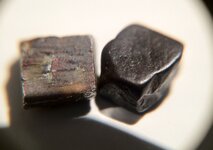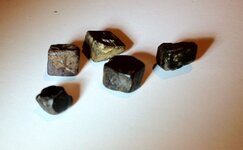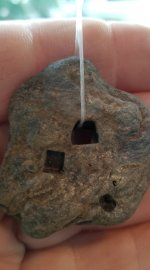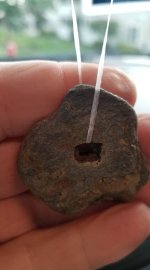wrench
Jr. Member
- Jan 27, 2009
- 23
- 6
- Detector(s) used
- SHADOW 5 WHITES XLT
- Primary Interest:
- All Treasure Hunting
i found this rock on my grand parents farm years ago, was wandering if anyone knew why it had square notch in it? some say it was a property marker to indians used it to poor candy sugar cubes.....any idea? was found on corner of property...........kev

















